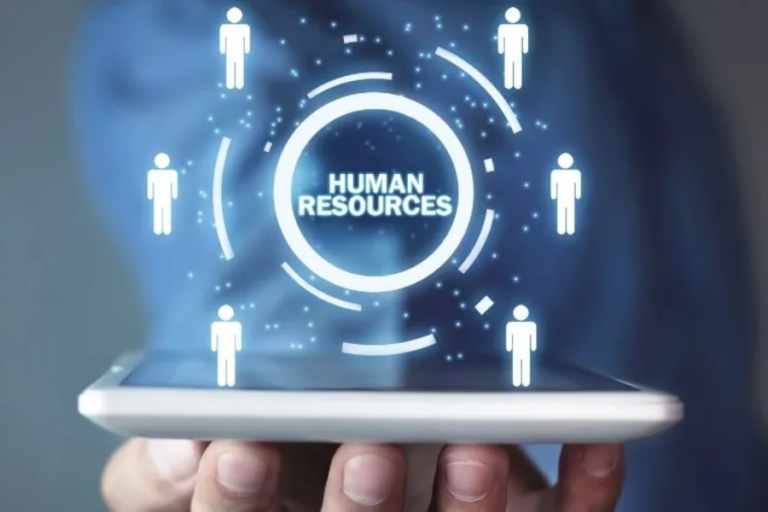Understanding US Inflation: Exploring the 7.5% Jump in 40 Years
Inflation is a powerful economic force that influences the purchasing power of money, affecting both individuals and businesses. In the United States, inflation has been a focal point of economic discussions, especially with a significant rise of 7.5% over the past 40 years.
This article aims to explore the concept of inflation, examine its historical trends, and analyze the recent surge in inflation, shedding light on its causes, effects, and strategies for managing it.
Understanding Inflation
Inflation refers to the consistent increase in the general price level of goods and services in an economy over time. This rise in prices reduces the purchasing power of money, meaning that each dollar can buy fewer goods and services than before.
The most common tool for measuring inflation is the Consumer Price Index (CPI), which tracks the price changes of a basket of goods and services typically purchased by households. Inflation is expressed as a percentage, indicating the rate at which prices have risen compared to the previous period.
Factors Influencing Inflation
Several economic factors contribute to inflation, and understanding them is essential for analyzing the causes of rising prices.
Monetary Factors
Monetary policy plays a significant role in inflation. Central banks, like the Federal Reserve, control the money supply and interest rates to manage inflation and economic stability. When the money supply increases, and interest rates are low, people and businesses have more access to credit, leading to higher demand for goods and services.
This increase in demand can push prices up, contributing to inflation. Conversely, tightening the money supply or raising interest rates can help combat inflation by reducing demand.
Demand-Pull Inflation
Demand-pull inflation occurs when the demand for goods and services exceeds the available supply. This imbalance leads to higher prices as consumers compete to purchase limited resources. Several factors can contribute to excessive demand, such as increased consumer spending, government spending, or a booming economy. In a strong economy, people tend to spend more, and businesses may increase prices in response to higher demand.
Cost-Push Inflation
Cost-push inflation arises when the costs of production increase, pushing businesses to raise prices to maintain their profit margins.
This can occur due to rising costs of raw materials, labor, energy, or transportation. For instance, if the price of oil increases, the cost of transportation rises, leading to higher prices for goods across the economy. Similarly, labor shortages or increased wages can lead to higher production costs, which are passed on to consumers.
Historical Trends in US Inflation
Over the past 40 years, the United States has seen significant fluctuations in inflation, with periods of both high and low inflation rates. Understanding these trends can provide context for the recent 7.5% jump in inflation.
Inflation in the 1980s and 1990s
In the 1980s, the US faced a period of high inflation, driven by expansionary monetary policies, rising oil prices, and global supply chain disruptions. The Federal Reserve under Chairman Paul Volcker responded by implementing aggressive interest rate hikes to control inflation. These measures eventually led to a decrease in inflation in the 1990s. However, inflation remained a concern throughout the decade, though it was relatively stable compared to the 1970s and early 1980s.
Inflation in the 2000s and 2010s
The 2000s and 2010s saw much lower inflation rates, largely due to improved central bank policies and global economic stability. The Federal Reserve aimed for an inflation target of around 2%, fostering an environment of price stability and steady economic growth. Globalization, technological advancements, and efficient supply chains helped keep production costs low, which contributed to the low inflationary environment during this period.
Recent Inflation Jump
The US has recently experienced a dramatic increase in inflation, reaching a 7.5% rise over a 40-year period. This surge in inflation has raised alarms among economists, policymakers, and the general public. Understanding the causes of this inflation jump requires analyzing the unique circumstances that have contributed to it.
Causes of Inflation
Several factors have driven the recent surge in inflation:
- Supply Chain Disruptions The COVID-19 pandemic severely disrupted global supply chains, leading to shortages in raw materials, goods, and labor. These disruptions caused production delays and higher costs for manufacturers. As businesses faced higher costs and supply shortages, they raised prices, contributing to inflation.
- Expansionary Fiscal Policies In response to the economic downturn caused by the pandemic, governments worldwide, including the United States, implemented large fiscal stimulus measures. These policies included direct financial support to individuals and businesses, increased government spending, and monetary easing. While these measures helped stimulate the economy, they also injected substantial amounts of money into the economy, which contributed to inflation.
- Increased Demand for Goods and Services As the US economy began to recover from the pandemic, consumer demand surged. People, who had limited spending options during lockdowns, began purchasing goods and services at higher rates. This demand outpaced supply, further fueling inflationary pressures.
Impact of Inflation
Inflation has far-reaching effects on both the economy and individual financial well-being. The consequences of rising inflation can be felt across various sectors.
Decreased Purchasing Power
The most immediate effect of inflation is the reduction in purchasing power. As prices rise, each dollar loses its ability to buy goods and services. This decrease in purchasing power can have a significant impact on households, especially those with fixed incomes. Everyday items like food, gas, and housing become more expensive, leading to a decrease in the overall standard of living.
Uncertainty and Reduced Investment
High inflation rates can create economic uncertainty, making it harder for businesses and individuals to plan for the future. When prices are rising unpredictably, businesses may hesitate to invest in new projects, and consumers may delay major purchases. This reduction in investment can hamper long-term economic growth.
Redistribution of Wealth
Inflation can lead to a redistribution of wealth. Debtors often benefit from inflation because they can repay loans with money that is worth less than when they originally borrowed it. On the other hand, savers and creditors may lose purchasing power, as the value of their savings erodes over time. This creates an imbalance that can lead to increased economic inequality.
Effects of Inflation on the Economy
Inflation doesn’t just affect individuals; it impacts entire sectors of the economy, from real estate to labor markets and financial systems.
Housing and Real Estate
As inflation rises, the cost of housing and real estate typically increases. Home prices can soar as demand outstrips supply, making it more challenging for individuals to afford homes. For investors, real estate can be seen as a hedge against inflation, as property values often rise with inflation.
Wage and Labor Markets
Inflation can have significant implications for wage negotiations. As the cost of living increases, workers may demand higher wages to keep up with rising prices. If businesses comply, this could lead to a wage-price spiral, where higher wages lead to higher costs, which, in turn, lead to higher prices.
Financial Markets
Inflation also impacts financial markets, influencing stock prices, bond yields, and interest rates. For instance, the Federal Reserve may raise interest rates to combat inflation, which can affect the stock market by increasing the cost of borrowing for businesses and consumers. Bond investors are also impacted, as inflation erodes the real value of future bond payments.
Managing Inflation
To manage the effects of inflation, policymakers and individuals can adopt various strategies.
Monetary Policy
Central banks, particularly the Federal Reserve, play a crucial role in managing inflation through monetary policy. The Fed can adjust interest rates, decrease the money supply, and implement other tools to stabilize prices. When inflation is too high, the Fed typically raises interest rates to curb demand and reduce inflationary pressures.
Diversifying Investments
Investors can protect themselves from inflation by diversifying their portfolios. Investments in real estate, commodities like gold, and inflation-protected securities (TIPS) can act as hedges against rising prices. A well-diversified portfolio helps to balance the risks associated with inflation.
Wage Negotiations and Contracts
In a high-inflation environment, workers and labor unions can negotiate contracts that include inflation adjustments. This ensures that wages keep pace with rising costs and that workers’ purchasing power is protected.
The Role of Central Banks
Central banks, such as the Federal Reserve, are at the forefront of managing inflation and ensuring economic stability. One of the primary tools used by central banks is inflation targeting, where specific inflation rates are targeted through interest rate adjustments. By monitoring key economic indicators such as GDP growth, employment data, and inflation, central banks can make informed decisions to maintain price stability.
Recent Inflation Trends in the US
The recent jump in US inflation by 7.5% over 40 years is an anomaly that has caught the attention of policymakers and citizens alike. Factors such as supply chain disruptions, expansionary fiscal policies, and a surge in demand have played key roles in driving this increase. As inflation continues to be a concern, understanding its causes and effects is crucial for navigating the future.
Factors Contributing to the Inflation Jump
The recent inflationary surge in the US can be attributed to several key factors:
- Supply chain disruptions due to the pandemic.
- Expansionary fiscal policies aimed at combating the economic slowdown.
- Increased consumer demand as the economy recovers.
Implications of the Inflation Jump
The 7.5% rise in inflation has significant implications for individuals and businesses:
- Reduced purchasing power for consumers.
- Increased uncertainty in the economy, affecting investment decisions.
- A possible redistribution of wealth, benefiting debtors while harming savers.
How to Navigate Inflationary Times
Navigating inflation requires careful financial planning and strategic decision-making. Individuals and businesses can take the following steps to protect their financial health:
- Budgeting and saving are essential for managing inflationary pressures. Creating an emergency fund can provide financial stability during uncertain times.
- Investing wisely in assets that can withstand inflation, such as real estate and commodities, can help preserve wealth.
- Reviewing debt and loan terms can help individuals and businesses ensure they are not paying more in real terms due to inflation.
Conclusion
Understanding inflation and its impact on the economy is crucial for individuals and businesses to make informed financial decisions. The recent 7.5% inflation jump highlights the need for proactive measures to mitigate the effects of inflation.
By staying informed, diversifying investments, and adopting strategic financial practices, individuals and businesses can better navigate inflationary periods and safeguard their financial well-being.
Stay connected with the latest news and stories from London at london daily.






